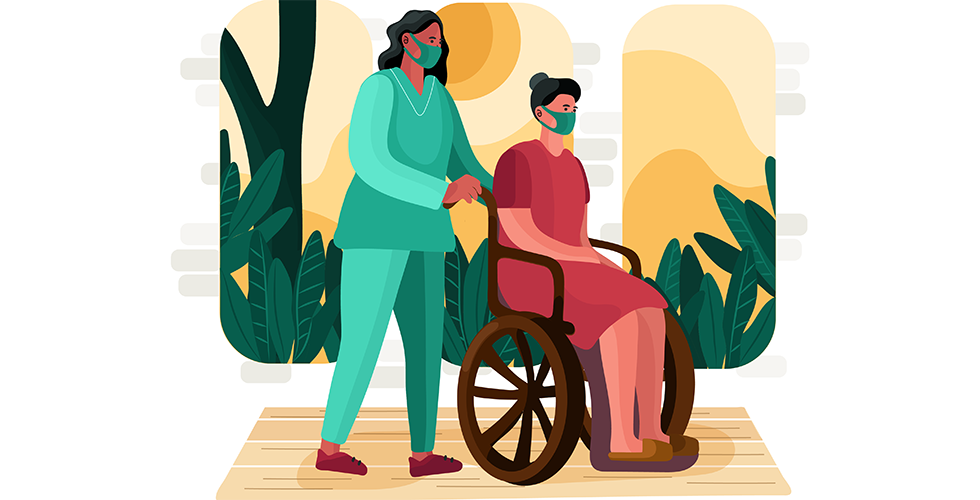If you have an injury caused by overexertion or repetitive movement, you may see redness or swelling, feel a dull or aching pain, or experience weakness.
Preventing musculoskeletal injuries
- Ensure that you have reviewed the client assessment and are familiar with the mobility requirements of your client
- Use equipment, such as portable lifts, transfer boards and rails, whenever possible
- Read the care plan and check for hazards to assess the risks every time you transfer or reposition a client (See Resource Section – Point of Care Risk Assessment)
- Avoid awkward positions as much as possible and ask your client to assist when appropriate
- Report changes in the client’s abilities so that the care plan can be adjusted
- Report workplace injuries early so that they can be treated quickly
- Check out additional resources and tools on SafeCare BC’s website
Are you prepared?
- I have ensured that the room is tidy and clutter-free to allow me space to work
- I am aware of my client’s mobility needs
- My supervisor has provided me with instruction and training on the safe use of available mechanical aids or other equipment
- I am providing my client with cues to help me with all transfers and repositioning tasks
- I have reported information relating to my client’s changing condition that affects his or her ability to transfer or follow directions
- I am aware of the signs and symptoms of a musculoskeletal injury and will report to my supervisor if I am injured
- I know to notify my supervisor immediately if it is unsafe for me to proceed
